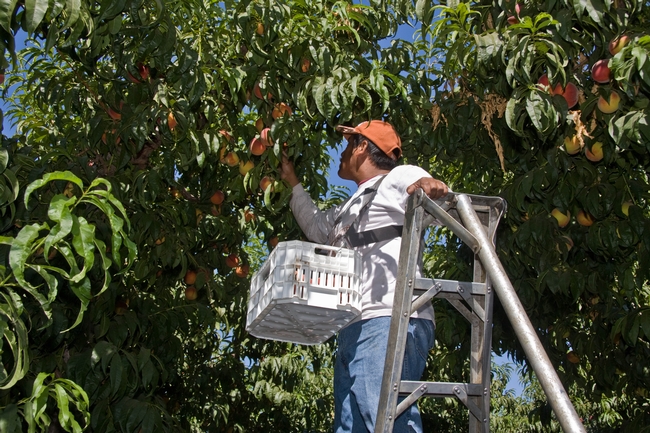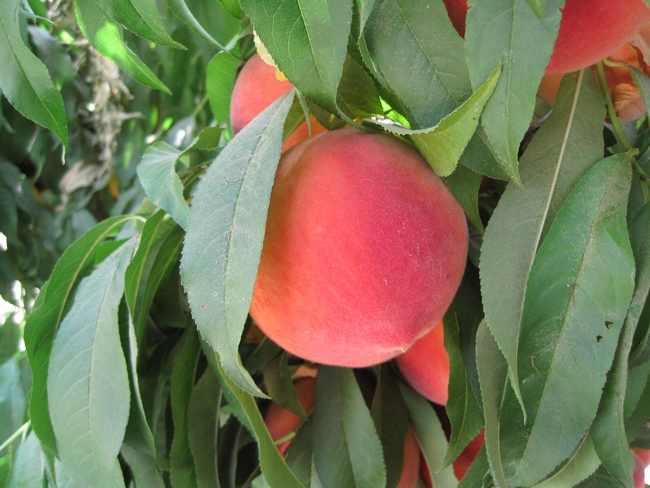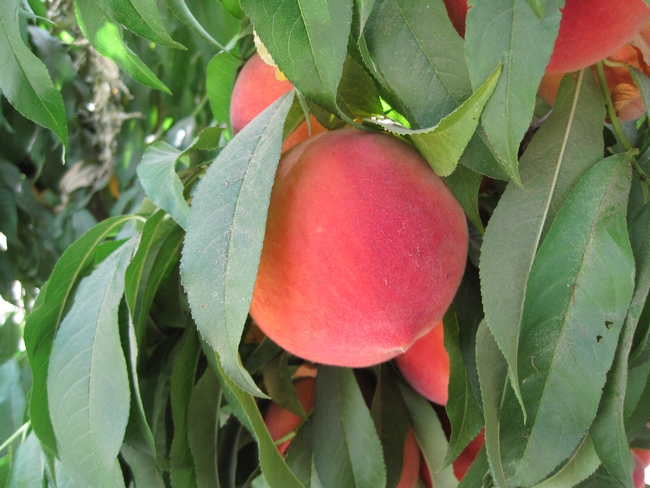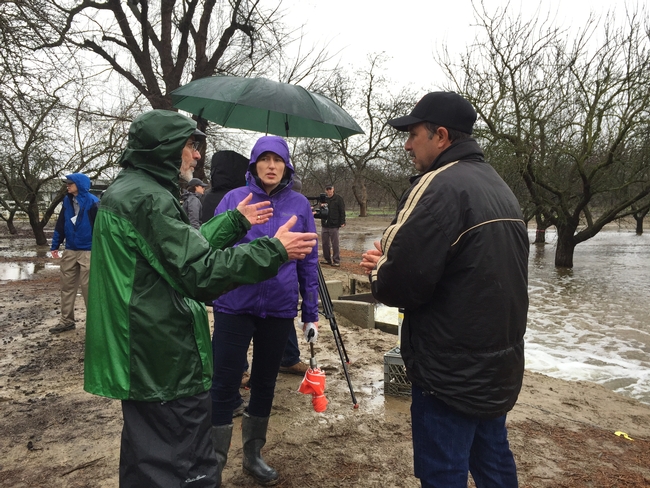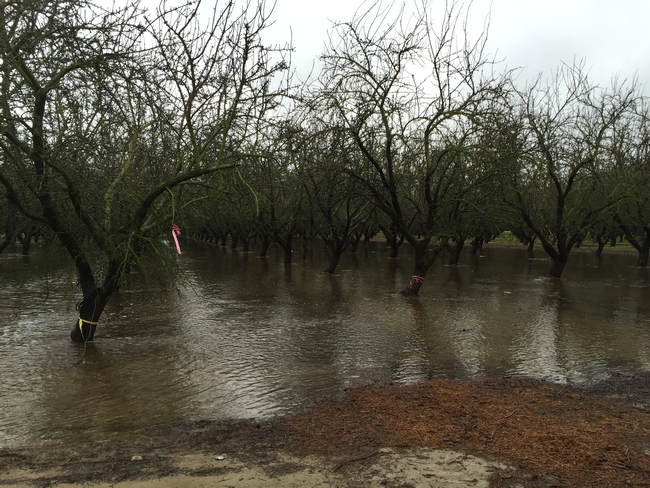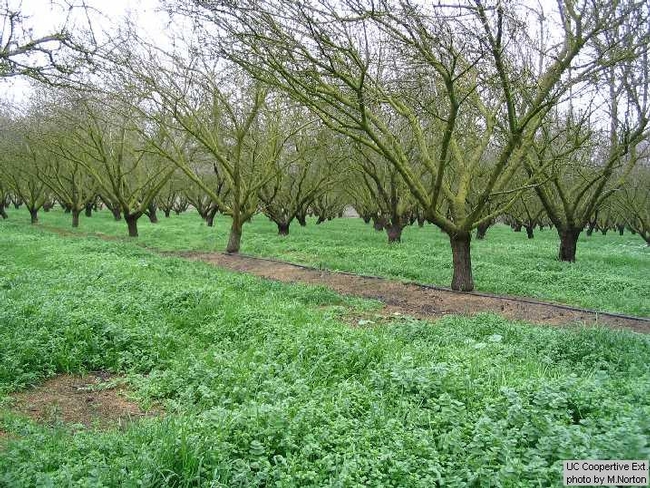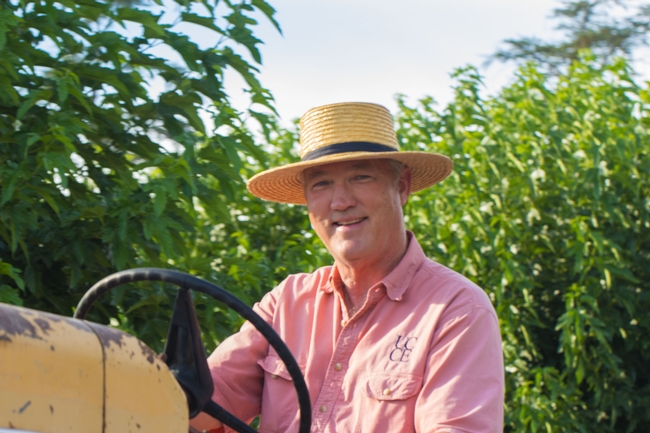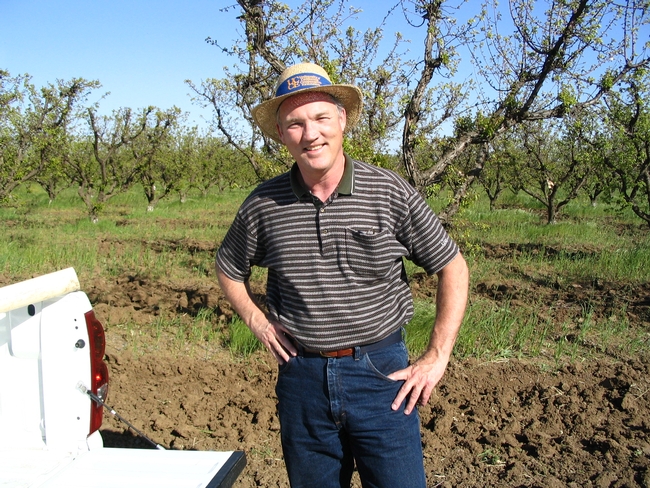Posts Tagged: Roger Duncan
Late-harvest processing peaches produce more profit, new UC studies show
Tree fruit growers can receive premiums for delivering certain extra-early varieties of peaches, but peach farmers may net roughly $800 more per acre from late-harvest processing peaches than extra-early harvest varieties, according to new cost studies released by the UC ANR Agricultural Issues Center and UC Cooperative Extension.
To help farmers make decisions on which peach varieties to plant, UC researchers present sample costs to produce extra-early harvested cling and freestone peaches and late harvested cling and freestone peaches for processing in the Sacramento and San Joaquin Valley in these studies.
Although processors pay more for extra-early harvested peach varieties than late-harvest peaches, the researchers found that yields are higher for late-harvest varieties while costs for hand thinning the fruit are lower.
“Peaches harvested early in the season have less time to grow compared to peaches that get to hang on the tree another month or more,” explained Roger Duncan, UC Cooperative Extension advisor in Stanislaus County, who coauthored the studies. “Therefore, more fruit has to be removed so the remaining fruit can size. That means it costs you more to produce less.”
The analyses are based upon hypothetical well-managed farming operations using practices common to the region. The costs, materials and practices shown in these studies will not apply to all farms. Growers, UC ANR Cooperative Extension farm advisors and other agricultural associates provided input and reviewed the methods and findings of the study.
Both studies assume a 100-acre farmer-owned operation with 40 acres of cling peaches. The remaining acreage for both hypothetical farms is planted in other mature tree crops. The estimated economic life of the extra-early harvested cling peach orchard and the late harvested cling peach orchard is 18 years.
Some of the major differences between the two studies are return price, yield and fruit thinning cost. The extra-early harvested varieties have a price of $545 per ton, a yield of 17 tons per acre, and a thinning cost of $1,445 per acre. The late harvested varieties have a price of $490 per ton, a yield of 20 tons per acre, and a thinning cost of $1,177 per acre.
Asked if a small farm could save on fruit thinning expenses by doing it themselves, Duncan replied, “I guess it would be possible for a small family operation to do the thinning themselves, but not likely. It can take 20 to 40 minutes to thin a single tree. If there are 151 trees per acre, you can see that it would take one skilled person over a week to thin one acre.”
The authors describe the assumptions used to identify current costs for production material inputs, cash and non-cash overhead. Ranging analysis tables show net profits over a range of prices and yields. Other tables show the monthly cash costs, the costs and returns per acre, hourly equipment costs, the whole farm annual equipment, investment and business overhead costs and the operations with equipment and materials.
Free copies of “Sample Costs to Produce Processing Peaches, Cling and Freestone Extra-early Harvested Varieties, in the Sacramento and San Joaquin Valley – 2017” and “Sample Costs to Establish and Produce Processing Peaches, Cling and Freestone Late Harvested Varieties, in the Sacramento and San Joaquin Valley – 2017” are available on the UC Davis Department of Agricultural and Resource Economics website at https://coststudies.ucdavis.edu. Sample cost-of-production studies for many other commodities are also available.
The cost study program is funded by the UC Agricultural Issues Center and UC Cooperative Extension, both part of the UC Division of Agriculture and Natural Resources, and the UC Davis Department of Agricultural and Resource Economics.
For additional information or an explanation of the calculations used in the studies, contact Jeremy Murdock at the Agricultural Issues Center, at (530) 752-4651, Janine Hasey, UC Cooperative Extension advisor for Sutter/Yuba counties, at (530) 822-7515, or Duncan at (209) 525-6800.
California peaches are in good shape
The warmest winter since 1907 in south-central Texas has left its peach crop with inadequate chill hours this year, reported Lynn Brezosky in the San Antonio Express-News.
Without sufficient chill hours over the winter, the buds didn't get the re-boot they need to bloom in proper synchrony, which is important for blossoms to set fruit. The leaves have also been slow to emerge. "The trees look like it's still winter," said Jim Kamas, Texas A&M AgriLife Extenson horticulturalist.
“The lack of chill hours is a big deal,” said Larry Stein, extension horticulturalist with AgriLife Research & Extension Center.
The Texas trouble combined with a cold blast that destroyed half the crop in Georgia and North Carolina this spring mean peaches are likely to be in short supply this year.
The sweet spot, Brezosky wrote, may be California, the No. 1 peach producer in the nation. Roger Duncan, UC Cooperative Extension pomology adviser, could think of no major problems affecting the southern part of the state's fresh market peach crop.
“I think in general it's probably going to be just fine,” he said.
Researchers study farm field flooding for aquifer recharge
UC ANR Cooperative Extension specialist Toby O'Geen was the lead author of research published in California Agriculture journal that identified agricultural lands in California suitable for flooding in order to bank groundwater. He has created an app that allows landowners across the state to assess the suitability of their property for groundwater banking.
The Modesto project will determine what impact winter flooding will have on the health of almond trees and almond yield. UC ANR Cooperative Extension advisor Roger Duncan was quoted in the Los Angeles Times about the potential advantages and disadvantages of flooding crops in the winter. He said water could spur more fungal diseases, but could also drown out worms and mites that damage crops.
The Almond Board of California is funding the project, anticipating that certain almond orchards will be good candidates for groundwater recharge.
"Almond orchards have good soil characteristics, and water delivery systems are already in place,” said Bob Curtis, director of agriculture affairs for the almond board. “Winter flooding should actually benefit the trees while replenishing groundwater to benefit us all."
Following are recent articles about the project:
Researchers test a possible drought solution by flooding an almond farm
Geoffrey Mohan, The Los Angeles Times, Jan. 20, 2016
(Reprinted in Daily News 24/7)
Scientists flood almond orchards to restore groundwater in California
Capital Public Radio, Jan. 20, 2016
Stormwater floods Modesto almond orchard in experiment to restore aquifer
San Jose Mercury News, Jan. 19, 2016
(Reprinted in the Contra Costa Times)
Researchers show off groundwater recharge near Modesto
Modesto Bee, Jan. 20, 2016
(Reprinted in the Fresno Bee and Bloomberg Business)
UC Davis scientists flood Modesto orchards in hopes of finding way to restore groundwater
CBS13, Sacramento and Modesto affiliates, Jan. 20, 2016
Researchers test a possible drought solution by flooding an almond farm
KTLA News 5, Jan. 20, 2016
(Rebroadcast on KRQE News 13)
Orchard tries experiment to restore aquifer
Morning Ag Clips, Jan. 20, 2016
Almond orchard key to water banking experiment
AgraNet, Jan. 20, 2016
Flood irrigation may help recharge aquifers
UC Agriculture and Natural Resources experts are studying the effectiveness of flood irrigation to help recharge underground aquifers that have been depleted due to the drought, reported Ken Carlson in the Modesto Bee.
The pilot research project will involve flood irrigating almond orchards during the winter months, according to Roger Duncan, UC ANR Cooperative Extension advisor in Stanislaus County.
"If it works well, we can expand and potentially look at other locations, other soil types and other cropping systems," Duncan said.
The Modesto trial will take place on one orchard with 10 to 15 acres of fairly sandy soil with groundwater from another area.
According to the article, commercial almond orchards are not usually irrigated in winter because there's enough rainfall to keep the ground moist. Flood irrigation in almonds has of late been regarded as a wasteful practice from the era of cheap and plentiful water; many farmers have turned to micro sprinklers and drip irrigation for water conservation. But orchard flooding could bounce back as a strategic tool as local jurisdictions try to manage their groundwater levels.
Maxwell Norton, director of UCCE in Merced County, to retire after 36 years
Maxwell Norton, UC Cooperative Extension director and advisor in Merced and Mariposa counties, plans to retire on July 1. Norton, who specializes in tree fruit, grapes and farmland preservation, has served Merced County growers for UC Agriculture and Natural Resources for 36 years.
Norton is “probably the kind of person everyone would like to know – a kind and gentle soul who exudes knowledge and wisdom,” said Bill Martin, executive director of Central Valley Farmland Trust.
For the past 10 years, Martin has worked on conserving farmland with Norton, who was a founding member of the Merced County Farmland and Open Space Trust, which merged with two other land trusts to become Central Valley Farmland Trust.
“He has an understanding of the landscape that is greatly appreciated,” Martin said of Norton. “He's very low-key, observant and provides timely input on provocative issues that come up at board meetings.”
Raised on a farm near Salida, north of Modesto, Norton studied pomology at Fresno State University, earning a B.S. and an M.S. in plant science before joining UC Cooperative Extension.
During his career, the UC Cooperative Extension advisor has helped Merced County growers solve problems in kiwifruit, Asian pears, prunes, peaches, strawberries, figs and pomegranates.
“When I started in 1979, there was rapid growth of two new industries – kiwifruit and Asian pears,” Norton said. “I conducted some early research trials on kiwifruit and authored a chapter of the new UC Cooperative Extension production manual for kiwifruit. I also spent a lot of time diagnosing Asian pear problems.”
Early in Norton's career, UC scientists introduced a device for measuring soil moisture called a neutron probe. The young advisor tested the device in peach orchards on clay-loam soils, attempting to correlate the probe, gypsum blocks, tensiometers and pressure chamber data.
“All of these tools were relatively new then,” said Norton. “Mid-day values had not been established yet so data collection entailed going out at 3 a.m. to pick leaves and measure the leaf water potential while crouching in the back seat of my government-issued Plymouth Fury.”
Collaborating with his UC Cooperative Extension colleague Roger Duncan in Stanislaus County, Norton conducted several research projects aimed at reducing labor costs in peaches. Projects included mechanical fruit thinning, chemical blossom thinning and various types of mechanical blossom thinning.
Research by Norton and his fellow Cooperative Extension advisors showed that mature prune trees could be pruned every other year and still produce desirable fruit size and maintain yields. Growers widely adopted the practice of alternate year pruning. Later, Cooperative Extension set out to demonstrate the new integrated prune farming practices where IPM tools were integral parts of the system.
In the early 1980s, when many grape growers were spraying pesticides three to four times a year, leafhoppers developed resistance to some insecticides. Norton and other UC experts saw the potential for biological control by the Anagris parasitic wasp. UC Cooperative Extension advisors persuaded growers to not spray the first or second generations of leafhoppers and let the beneficial insects control the pests. Now grape growers rarely have to spray for leafhoppers.
Over Norton's career, agriculture in Merced County has diversified. He began having strawberry meetings translated into Hmong or Lao for immigrant growers and studying pomegranates and figs.
Off the farm, Norton has been active in community development, organizing workshops for farmers on how to export their products, chairing the Merced County Economic Development Task Force twice and serving twice as president of the county's Chamber of Commerce.
“My favorite part of the job has always been doing farm calls, where I went out and visited growers and diagnosed problems, explaining the nature of the problem, and most importantly, suggest things to try,” Norton said.
In retirement, Norton plans on playing his tenor and bari sax in jazz bands, training UC Master Gardeners and volunteering with the local historical society and other organizations.
He has also been granted emeritus status by UC Agriculture and Natural Resources.
RELATED ARTICLE
Capital Press: Advisor helps SJ Valley growers meet challenges, opportunities

